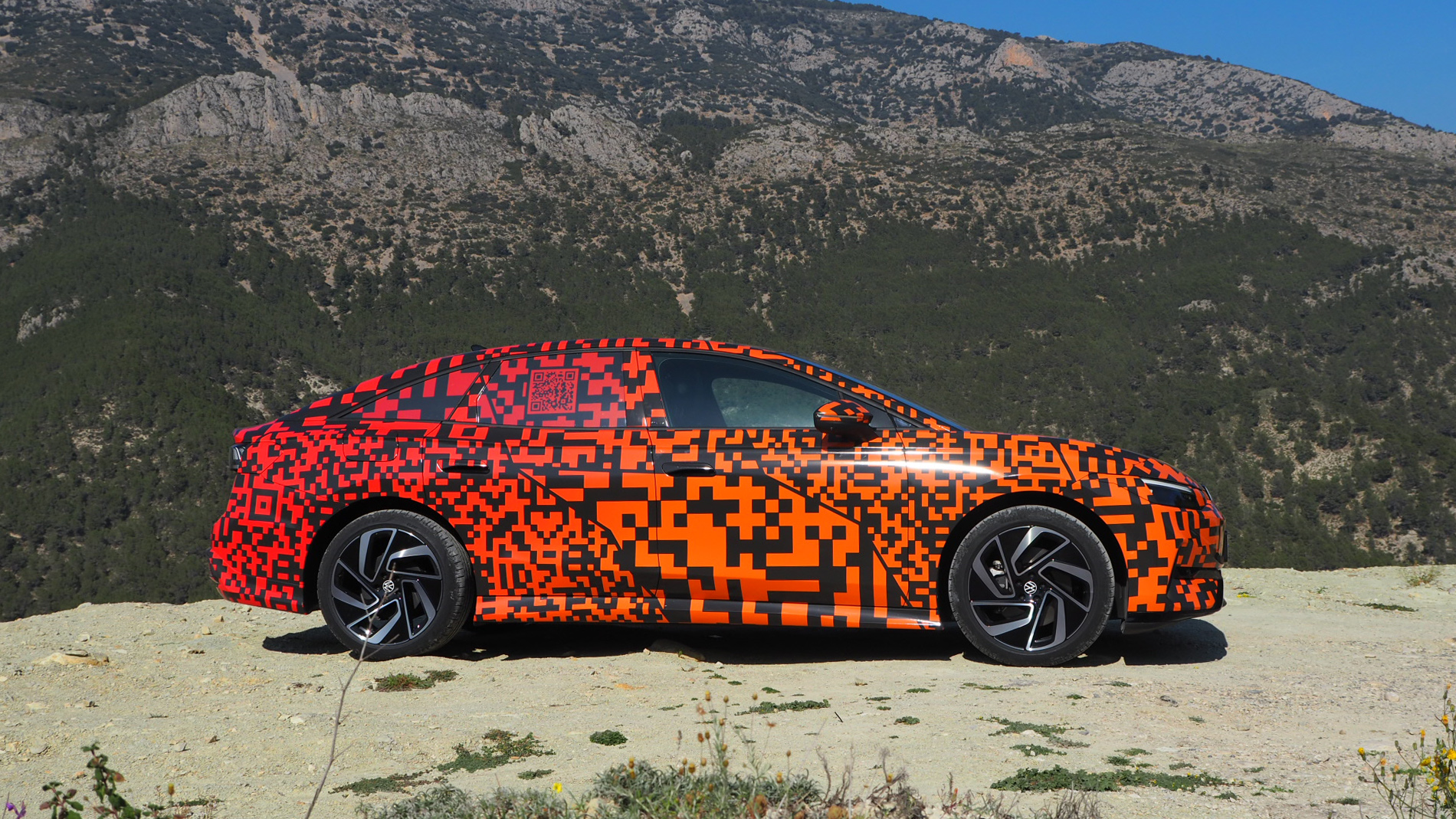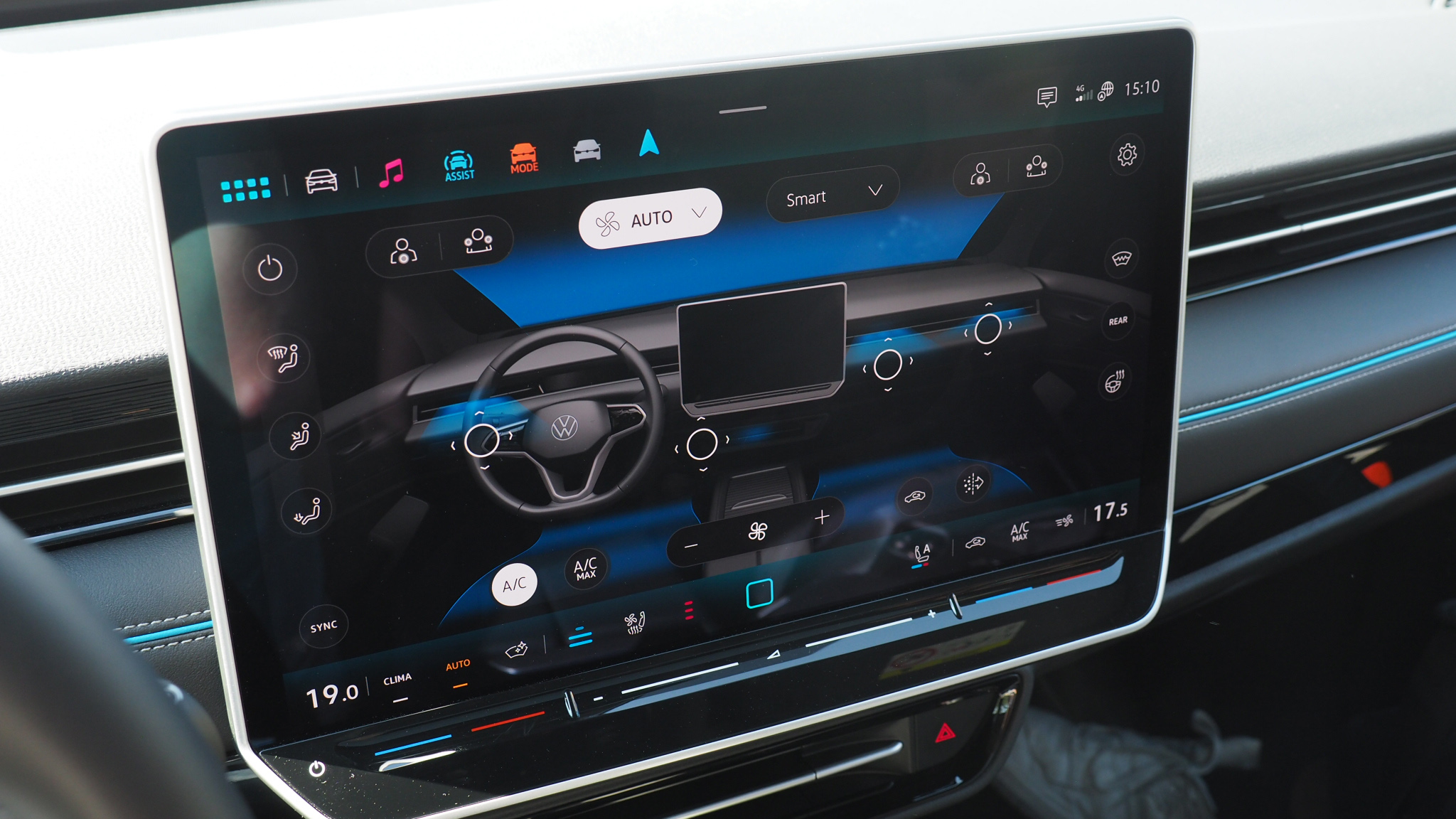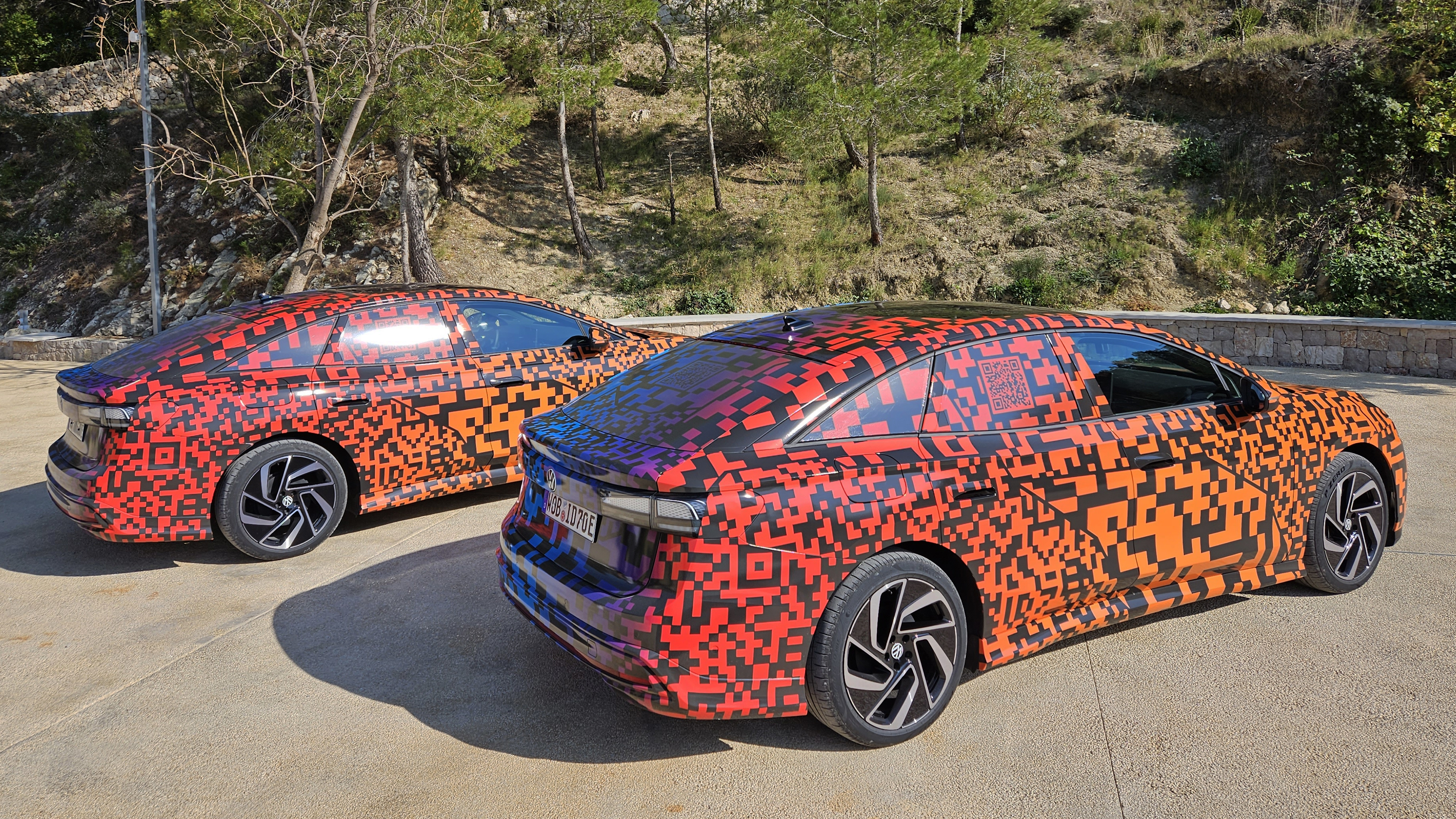
I've driven dozens of electric vehicles over the years, but the Volkswagen ID.7 is the first I've tried in a 'covered' state. I'd just call it camouflaged, really, as you certainly won't be able to purchase the VW ID.7 in the snazzy orange, red, purple and blue mix that you see in my picture above. The sun does make it look extra pretty, mind, but you'll need to wait a bit longer before the full reveal of the car in its 'normal' paint-job attire.
Nonetheless, the ID.7 in this covered state is around 95 per cent good as to what you'll be able to buy and drive come 2024 – and even at this level, I must say I'm impressed by the largest all-electric Volkswagen in the fleet (it's actually even longer than the ID.Buzz, believe it or not).
Indeed, when it comes to closely-priced rivals, I reckon Tesla should be worried at Volkswagen's "mid-£50,000s" expected asking price. That could be enough to tip potential Model S buyers to consider the German marque's efforts instead. And with the likes of the Mercedes EQE costing a significant chunk of cash more in the premium sector, Volkswagen is certainly onto something for those looking for an electrified family saloon.

Visually I find the ID.7 the most balanced model I've set eyes on in the ID range. When I first drove the smaller ID.3, for example, I wasn't totally sold on its 'snub nose', whereas the ID.7's longer hood and less 'upright; style are a real treat for the eyes. And when we're talking about the Tesla Model S by comparison, I think the scale and proportions are clearly comparable, daresay similar (and I actually prefer the VW's more distinctive and modern headlights design).
Indeed, the Model S is over 5 meters long. The ID.7, by comparison, is a touch shorter, but it's still significant at just shy of the 5-metre mark. That length equates to one of the biggest reasons to consider this Volkswagen: oodles of internal space. And while the embargo I've signed stipulates I can't show the rear seats in pictures at this stage, I can certainly say having sat back there (alongside a 190cm tall colleague) that there's a boatload of space for the long-legged. All without compromise to driver or front passenger comfort.
The front is where I preferred to be, but of course, as that's where the action happens – largely controlled by the all-new 15-inch touchscreen positioned off the dash within the driver's reach. This is a much larger screen than in other ID models, the first step in Volkswagen's evolving infotainment and digital control systems. It's certainly a step forward, too, although I do still find certain controls, especially climate, are too buried (there's no manually adjustable air vents in the ID.7 either, the airflow, including the direction of it, is manipulated digitally via the touch display).

Just like in the Tesla Model S, Volkswagen includes a whole bunch of tech as standard in the ID.7. That 15-inch screen is the norm in the VW, for example, as is the driver's display and dynamic head-up display (HUD), ensuring you've got lots of information at your fingertips.
Sign up to the T3 newsletter for smarter living straight to your inbox
Get all the latest news, reviews, deals and buying guides on gorgeous tech, home and active products from the T3 experts
With so many other premium manufacturers charging for every eventuality beyond the basics, I think it's a smart move that the ID.7 comes well-kitted out. There are other additions you can pay for, of course, including massage seats, a massive glass sunroof, a Bowers & Wilkins soundsystem, even dynamic mood lighting. Largely niceties rather than essentials, but it's nice to have the options available.
Tech is only one part of the picture though. How the ID.7 drives is obviously something you'll want to quiz. For a near-5-metre-long saloon it acquits itself well. No, it won't beat a maxed-out (and much pricier as a result) Model S off the line. But if you're looking to cart yourself and potentially a whole family around in comfort that's going to be largely besides the point, as the ID.7 still delivers 545Nm of torque from its 210kjW motor that's very capable of propelling you along at pace.

Not that you'll want to be pegging it about all over the place all of the time, as efficiency is a critical aspect of any car. I've got good news here, too, as Volkswagen is aiming at a Tesla-rivalling 434 miles per charge from the 85kW battery version. I say aiming, as it's not set in stone yet, and as anyone who's read WLTP figures (the body that assures such ranges) will know, always take a given percentage off for real-world driving. As a 'first drive' experience, lasting 45 minutes or so, I'm not in a position to assess the ID.7's true range just yet.
The ID.7 is also the first all-electric Volkswagen to offer battery pre-conditioning, providing the opportunity to recharge at up to 200kW. That'll deliver a 10-80 per cent charge in just 25 minutes, which is a decent enough figure. Not the very fastest on the market, either, with the Model S capable of 250kW, and the Porsche Taycan hitting the holy grail 350kW. Oh, and a cool little feature: the ID.7's charging cover flips upwards rather than sidewards to help avoid any rain getting in during bad weather, which is a nice touch.
So there we have it: in the ID.7 I think Volkswagen has a Tesla Model S-rivalling family saloon that looks the part, acts the part, and should be priced the part to keep it competitive. It includes a decent array of tech as standard, too, and I find it astute and powerful enough on the road to give buyers of spacious saloons another serious option when it comes to their next car.

Mike is T3's Tech Editor. He's been writing about consumer technology for 15 years and his beat covers phones – of which he's seen hundreds of handsets over the years – laptops, gaming, TV & audio, and more. There's little consumer tech he's not had a hand at trying, and with extensive commissioning and editing experience, he knows the industry inside out. As the former Reviews Editor at Pocket-lint for 10 years where he furthered his knowledge and expertise, whilst writing about literally thousands of products, he's also provided work for publications such as Wired, The Guardian, Metro, and more.

